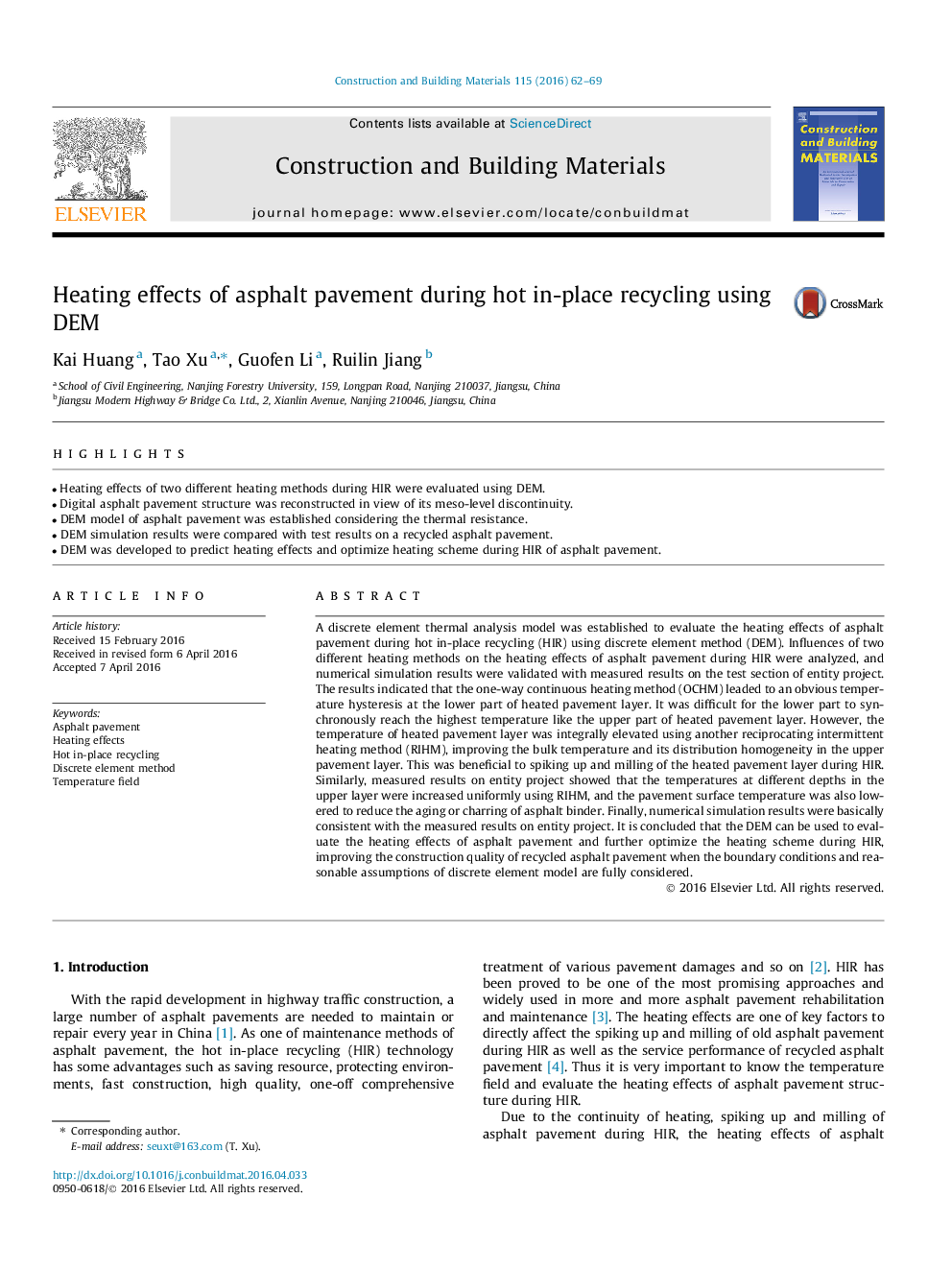| Article ID | Journal | Published Year | Pages | File Type |
|---|---|---|---|---|
| 6718725 | Construction and Building Materials | 2016 | 8 Pages |
Abstract
A discrete element thermal analysis model was established to evaluate the heating effects of asphalt pavement during hot in-place recycling (HIR) using discrete element method (DEM). Influences of two different heating methods on the heating effects of asphalt pavement during HIR were analyzed, and numerical simulation results were validated with measured results on the test section of entity project. The results indicated that the one-way continuous heating method (OCHM) leaded to an obvious temperature hysteresis at the lower part of heated pavement layer. It was difficult for the lower part to synchronously reach the highest temperature like the upper part of heated pavement layer. However, the temperature of heated pavement layer was integrally elevated using another reciprocating intermittent heating method (RIHM), improving the bulk temperature and its distribution homogeneity in the upper pavement layer. This was beneficial to spiking up and milling of the heated pavement layer during HIR. Similarly, measured results on entity project showed that the temperatures at different depths in the upper layer were increased uniformly using RIHM, and the pavement surface temperature was also lowered to reduce the aging or charring of asphalt binder. Finally, numerical simulation results were basically consistent with the measured results on entity project. It is concluded that the DEM can be used to evaluate the heating effects of asphalt pavement and further optimize the heating scheme during HIR, improving the construction quality of recycled asphalt pavement when the boundary conditions and reasonable assumptions of discrete element model are fully considered.
Related Topics
Physical Sciences and Engineering
Engineering
Civil and Structural Engineering
Authors
Kai Huang, Tao Xu, Guofen Li, Ruilin Jiang,
